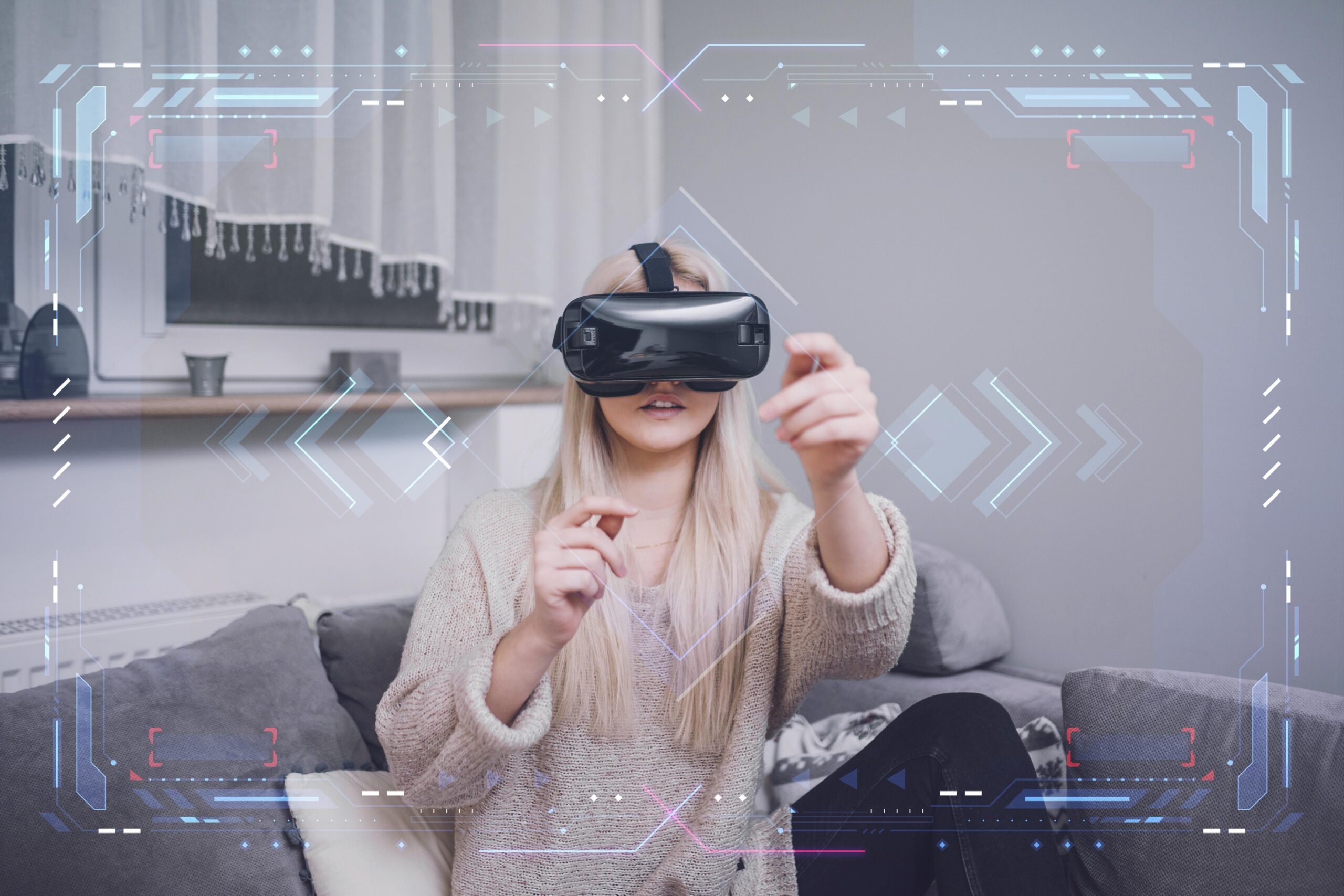With technology constantly advancing, new possibilities seem to be popping up all the time, and they have the potential to revolutionize countless industries. One such innovation is augmented reality (AR) technology, blends computer-generated images with a user’s view of their surroundings in real-time. This gives them an interactive and enhanced view of their reality. In this article, we’ll explore the world of augmented reality tech and its basics, various applications, advantages and disadvantages.
Getting to Know Augmented Reality Basics
To understand what AR can do, you have to understand how it works at its core. The heart and soul of augmented reality stem from computer vision. This tech lets computers analyze data from visual inputs like cameras and sensors so they can process their environment in real time. Algorithms then enable the virtual objects rendered by a program on a device’s screen or headset to align seamlessly with the user’s physical location. The result is a wonderfully bewildering mix of digital content and our natural surroundings.
Where Augmented Reality Can Be Used
Though it may sound like something from a sci-fi movie, AR has many practical uses across multiple industries. The worlds of construction and architecture often use AR to visualize how buildings will look once finished. By overlaying virtual renderings over existing locations, architects can assess designs down to minute details before construction begins.
In retail, some companies implement tools that let customers virtually try on clothes or makeup products before buying them. This helps give them a better idea of what the product will look like on them in real life — as opposed to just looking at themselves in a mirror in-store.
Benefits Of Using Augmented Reality Technology
There are many benefits resulting from incorporating this bizarre technology into our day-to-day lives. However, one worth highlighting is that users are more captivated than regular apps. When people get stimulated by both digital output on an app or program and physical stimuli in the real world, they tend to stay engaged for extended periods. Unsurprisingly, businesses have noticed this and are eager to use it to their advantage. If customers spend more time on their app, they also spend more time with the company’s brand.
Another big one is education and training. In classrooms, teachers can bring textbooks to life by letting students see them through an AR lens. In a business setting, employees can practice working safely through sometimes dangerous scenarios without risking injury or worse.
Augmented Reality’s Effect On The Gaming Industry
For most of us, gaming is just a fun pastime, but for some, it opens up opportunities to earn a living. With AR, however, game developers are starting to wonder if there might be ways they can change our entire mindset toward gaming—do away with old static consoles and instead give us something new that could change our perception of literally everything around us.
Marketing And Advertising With Augmented Reality
Perhaps even more exciting is what AR can do for marketing and advertising. By creating interactive and immersive experiences, companies can leave meaningful impressions on people long after they’ve put away their devices. Take makeup giant Sephora for example, they’ve installed stations within some stores where customers can virtually try on any product the store sells before buying it. This lets them know exactly which shade will look best on them — saving both the customer and employee valuable time that could otherwise be wasted during product returns and car trips to the store because you guessed wrong on what “ruby red” looks like (I’m not bitter).
Augmented Reality in Education and Training
Augmented reality is a hugely influential concept, not least for how it could revolutionize learning and training. In education, technology can be applied to allow students to experience things they otherwise couldn’t — think of medical students practising surgery or kids going on virtual field trips. Similarly, augmented reality can enhance training programs in business by creating realistic scenarios that employees can learn from quickly. Think of aviation workers simulating real emergencies before they happen or managers teaching new team members protocols without risking them applying bad ones.
Augmented Reality in Healthcare and Medicine
Healthcare and medicine are among the industries that have benefited most from augmented reality. One example is surgeons using an AR overlay to monitor vital signs during operations. Another is patients being trained in rehab exercises before they try them at home. When doctors prevent mistakes and patients feel more secure with their care plans, that’s a win-win.
AR has come a long way, but hiccups are still waiting to be ironed out before mass adoption. The first one is hare: systems need solid cameras and sensors to work correctly, which costs a lot. Then there’s the issue of field of view (FOV) when users don’t see enough virtual content relative to what they see in reality, immersion in experiences like games breaks.
The Future of Augmented Reality Technology
The future looks bright for AR, though. It is bright. If we get smaller headsets with better image quality (like Apple Glass), anybody could start using virtual overlays at any time without too much thought about bothering their physical surroundings. And once artificial intelligence enters the equation — which will likely happen sooner rather than later — people will be able to interact with AR objects in ways that feel much more lifelike.
There’s no limit on what people might do with augmented reality as it becomes more accessible and advanced in its capabilities. It’ll take many years, if not decades, for all of the technology’s potential to be realized, but it will happen in more industries than we can think of. AR is already beginning to make itself at home in our everyday lives, from smartphones to laptops. The future will make it a more permanent guest. So, let’s embrace this exciting new world and see where it takes us.



